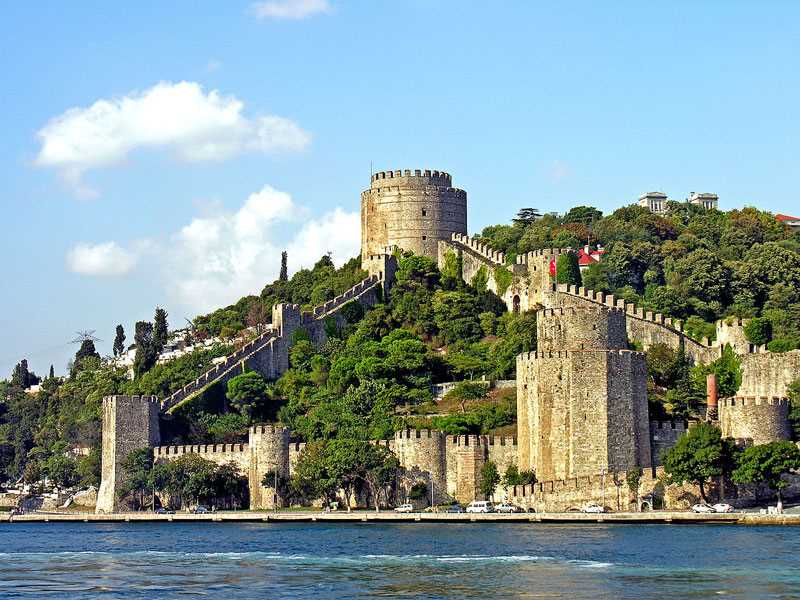The fortress was built by the Sultan Mehmet al-Fateh and was the starting point for Constantinople. The height of the walls of 82 m and built in just 4 months, a magnificence in beauty challenged the terrain and was a miracle in construction timed and constructive.
The fortress was built in preparation for the conquest of Constantinople and the tightening of the siege around it. The fortress of Rumli is one of the most important landmarks of the historical city of Istanbul. The fortress overlooking the Bosphorus is characterized by its high walls and towers. The thickness of the castle walls is between 20 and 25 feet, and the thickness of the walls of the towers covered with a layer of spilled lead is between 30, 32 and 35 feet. The castle was built in the form of the name of the Prophet Muhammad (peace and blessings of Allaah be upon him) to exempt Muslims from the order of the Sultan.
Rumli Fort is located on the narrow border between the Anatolian coast and the coast of Romeli, and the distance between them is about 700 m, which is the effects of architect Muslehuddin. The fortress consists of three angles and three towers, and controls one tower at sea and the other on land. The gabled tower next to the sea was built by the great minister Khalil Pasha Jandarli, the tower overlooking the village of Sardar, built by Saraouja Pasha, and the tower overlooking the Bepak neighborhood built by Zaganos Mohammed Pasha, who were said to have worked with their hands to be an example to be followed by the workers.
The story of Rumli Fort
Sultan Mehmet al-Fateh arrived at the site of the Rumaili fort on March 26, 1452, to cut the Black Sea Canal on Byzantium, thus cutting it off from there and controlling the safe Bosphorus Between Anatolia and Rumaili on the other hand. Sultan Mohamed Al-Fateh identified himself as the place of Rumli's fort and demolished the church of San Michele there. He added the ruins to the material that came from Anatolia. He also came with wood from Arghaly Qarne Deniz and Izmir and remained in this site until the end of August (August), where he directly supervised the construction work, which I use between 3 5,000 workers and 10,000 men as assistants, and succeeded in finishing work at the end of August. As work was underway, in Rumli Fort, Sultan Mehmet al-Fateh added some of the suffixes to the fortress of Anatolia, restored some of its fortresses, and placed the cannons and musks in it, thus enabling the channel to be narrower on both sides. The construction and construction of the Rumeli fort, which was named in the Ottoman sources in its old name, Hisarı Boğazkesen Fortress, which means the channel cutter, took place in four months. One account recalls that it was completed in 40 days.
However, according to the Byzantine sources, the arrival of Sultan Mohamed Al-Fateh to the site of the fort was on March 26, but under the writing on the inner door of the fortress overlooking the neighborhood of Bbk was completed work was in July, so it is clear that This monumental work was completed within three and a half months. When the fort was completed and the conservatives were put in place, Sultan Mohamed El Fateh returned to Aderna on 28 August.








